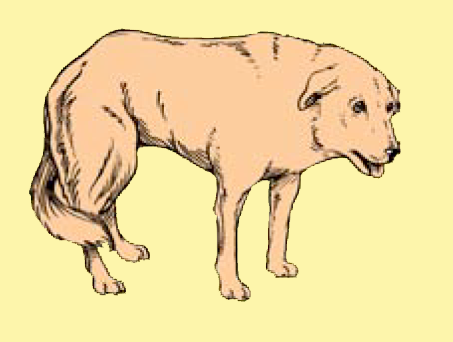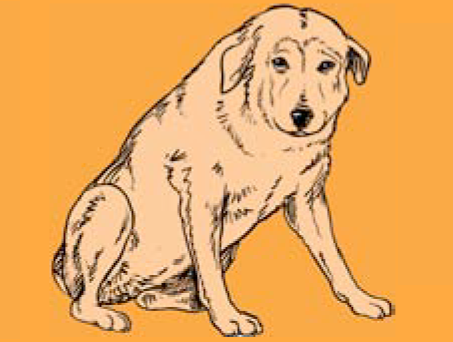Pain and how to deal with it
In this section you’ll find several tips on how you can recognize pain/decline in your dog and keep track of the process. After all, this information can be useful to adapt the treatment plan and/or painkilling scheme.
Quality of life
When treating a pet, the veterinarian will always try to achieve the highest possible quality of life. A good quality of life is pursued by limiting the side effects of treatments, as well as pain and discomfort arising from tumor growth and/or the treatment itself.
Not all tumors are painful, but dependent on the tumor type, the location and stage they can be associated with different kinds of pain.
Prevalence of pain associated to cancer
Even if a dog does not react painfully when you touch the tumor, it still might be painful. In humans, 20-50% experience pain at the time of their cancer diagnosis, this becomes almost half of treated patients and up to 90% in advanced or terminally ill patients.
Treatments can cause discomfort as well and this discomfort can vary from treatment to treatment. Chemotherapy will possibly cause other issues than radiotherapy or surgery. Side effects of chemotherapy, such as nausea and diarrhea can be handled with appropriate agents. Appetite can be stimulated via adaptation of the diet and/or appetite inducers.
The frequency of pain in animals is hard to estimate, as well as the efficiency of the painkilling. This is why it is important to be aware of the tumor type and stage, as well as symptoms indicating pain.
Types of pain
Acute pain is the type of pain that occurs within hours to days after a painful incident (such as trauma or surgery). This type of pain has a protective, physiological function, as it warns the animal to rest and limit the use of the painful body part. Acute pain disappears when the body part has healed. Chronic pain on the other hand, is a prolonged type of pain which can evolve to maladaptive pain. Maladaptive pain has no physiological function, it is pathologic and persists even when the affected part of the body has healed and the primary cause of pain is no longer present. This type of pain leads to changes in the central nervous system and causes a change in pain perception (the pain signals are processed differently). As a result, a dog with maladaptive pain can experience a pain stimulus much longer (e.g. perceive a bruise much longer or more intensely as painful), can be oversensitive (e.g. an injection can be perceived as more painful than under normal circumstances), but can also experience pain at another location than expected (e.g. not at the tumor itself).
Treatment plan
The cancer itself, but also its treatment can cause (temporarily) pain and may require more than one type of painkiller. The choice of painkillers should take into account the type and intensity of the pain as well as the dog’s comorbidities. Extensive guidelines have been drafted to manage pain (AAHA/AAFP pain guidelines). The sooner pain is treated, the better as this will lower the risk of this pain becoming maladaptive.
Different individuals may require a different pain plan. A certain painkiller can be very effective for dogs in general, but maybe not for your dog in particular. In that case, your veterinarian will look for an alternative painkiller and also examine which combinations of painkillers will provide the best effect. This is a process in which feedback towards your veterinarian is very important. You will shape the pain plan together with your veterinarian.
For safety precautions, your veterinarian should regularly check your dog to make sure that the painkillers are not causing side effects, but also to examine whether the treatment and/or pain plan need to be adapted.





